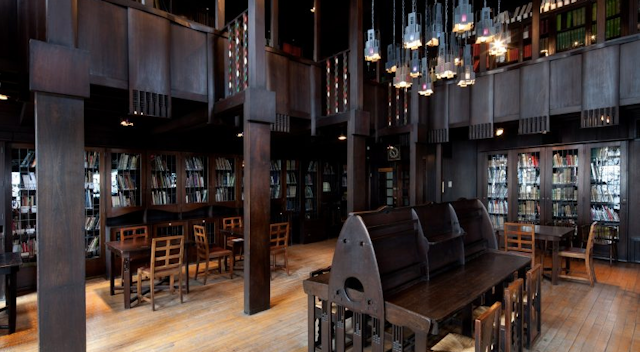In the aftermath of the fire that ravaged Glasgow School of Art’s Mackintosh building in May 2014, I wrote that “restoring the art school to its original design will be impossible”. This was based on my detailed 1992 PhD study of the building, and an exploration of records of that time.
Was I right in this appraisal? The answer is both yes and no. As the project to reinstate the building proceeded, the skills of the forensic archaeologists and others who probed the remains of that fire provided important detail of materials and finishes. Also, further archival documents had been unearthed. In this sense, I was wrong to argue that there were insufficient historical records.
But I was also correct in that current regulatory and insurance requirements dictated that key original features of the spatial design and aesthetic could not be reinstated, notably the open visual and physical flow of space through the corridors and stairwells. In this day and age, buildings are required to have stairwells that are physically separated to contain smoke and ensure a safe exit from upper floors in the case of a fire.

Visiting the school in September 2015, I donated my original PhD drawings to assist in the rebuilding, and gave a talk arguing against replication, ending with the question: “What would Charles Rennie Mackintosh do?” Returning in April 2018, just weeks before the second more devastating fire, I saw the renewal of the library well under way and the reconstruction of the the “Hen Run” – the timber-framed glass-walled walkway at the top of the building that connected two parts of the Mackintosh – virtually complete. This was totally destroyed in the second fire.
While apprehensive about the mixture of old and new, of repair and reinstatement, I was impressed by the attention to detail and standard of workmanship. Now, seeing images of the destruction of both the new parts and those that were untouched in the 2014 blaze, I again question what might be done.
Romance v pragmatism
There are already calls for reinstatement of the building. Architectural conservationist Miles Glendinning has argued that the building “should be restored and will be restored”. Architect David Chipperfield is also in favour of rebuilding, although he points to the difficulties of finding “an ‘acceptable’ plan for rebuilding according to Mackintosh’s original design”. However, there are more diverse views than in 2014. Art school graduate and architecture professor Alan Dunlop has argued that the Mackintosh “has now gone and should not be rebuilt”.
Professionals and the public alike display a romanticised vision of the art school. The building is seen as unique, the visionary work of its sole architect, Charles Rennie Mackintosh. In my PhD thesis, I argued that it was not unique, although undoubtedly the most outstanding example of architectural innovation in many Glasgow buildings of the period. I also showed that the building was likely not Mackintosh’s sole work, with contributions from John Honeyman and, in particular, John Keppie, the senior partners of the architectural practice where Mackintosh worked.
The romantic view aside, my argument against recreating the Mackintosh relies on looking at what cannot be reinstated. As outlined above, the original spatial composition of open corridors and stairs cannot be restored. Also, while rebuilding from 2014 set some new materials and finishes alongside the patina of age, reconstruction would now require a dominant “newness”, not originality. For these reasons alone, the building cannot be recreated as it was, either when new or as it stood before the fires.
I question how the building is understood and valued. For most, Charles Rennie Mackintosh’s design aesthetic is key. I expect this is where many millions of pounds of expenditure will be focused. However, the building holds a key position in the history of architectural technologies. My PhD revealed it as the first building in the world known to have the technology for proper air conditioning designed in to it from the outset.
Key elements, including the two massive Sturtevant centrifugal fans, survived the 2014 fire and were scheduled to be put on public display after rebuilding. I wait to hear if these elements have survived this time, and ponder whether the conservationists will place historical and financial value on their replication if they have not.
Digital record
Miles Glendinning talks of a digital record, “with exacting detail down to the nearest millimetre”. I wonder, for instance, if this record includes the pinhole to the underside of the timber duct that ran across the basement corridor and the metal cleat fixed to the wall below that secured the long-disappeared draw cord that ran through it? These were small but significant elements of the original air conditioning system that was abandoned in the 1920s. Will these be considered of design value in a rebuilt Mackintosh?

I accept that it is possible to build a new Mackintosh Building – estimated costs are more than £100m – but argue that it is not possible to recreate the Glasgow School of Art building, either in its original form or as it stood at any one time. With immense sadness, I say it is time to let go of the building, to remember it fondly through the artefacts and records that show it as it was at all stages throughout its history.
We should honour the building and its architects (Mackintosh, Honeyman and Keppie) with something new that serves both as a working art school – which the original did so splendidly throughout its life – and as a repository for these records and precious memories.

